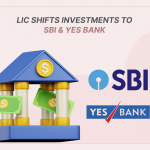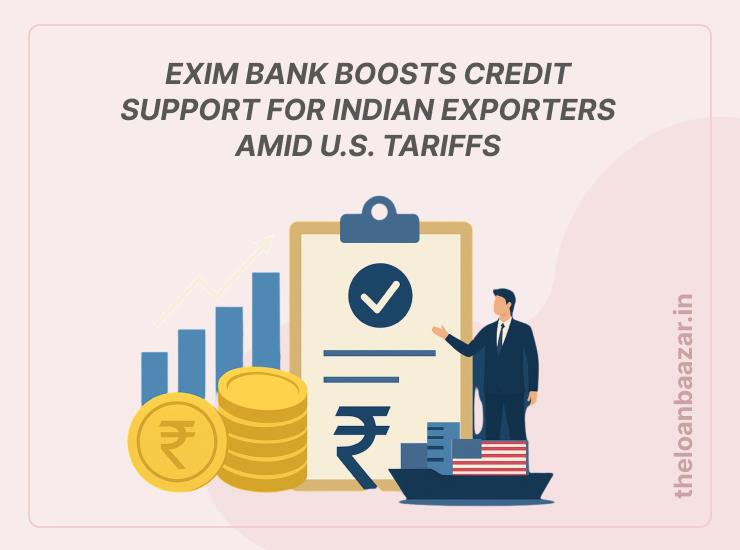Indian exporters are facing turbulent times due to rising trade tensions and U.S. tariffs on several categories of goods. In response, the Export-Import Bank of India (EXIM Bank) has stepped up its efforts by enhancing credit facilities, expanding risk limits, and introducing flexible financing tools to ease exporters’ cash flow challenges. This move is expected to provide much-needed liquidity and confidence to exporters navigating global headwinds.
Why Indian Exporters Are Struggling Under U.S. Tariffs
The U.S. has imposed additional tariffs on select Indian goods, affecting industries such as textiles, chemicals, auto components, and metals. These tariffs increase the landed cost of Indian exports, reducing their competitiveness in the U.S. market.
For small and medium exporters, the challenge is twofold:
-
Reduced demand due to higher costs.
-
Liquidity pressure as working capital cycles get stretched.
This is where EXIM Bank’s intervention becomes critical.
How EXIM Bank Is Supporting Exporters
EXIM Bank is India’s premier export financing institution. By strengthening its credit support framework, it aims to:
-
Expand Credit Lines: Providing exporters with easier access to working capital loans and receivables financing.
-
Ease Risk Limits: Reducing restrictions on some overseas banks, allowing for smoother trade transactions.
-
Offer Flexible Working Capital Solutions: Helping exporters manage cash flows efficiently during uncertain trade conditions.
-
Receivables-Based Financing: Allowing exporters to convert pending invoices into liquid funds quickly.
This ensures exporters can continue operations without disruptions while maintaining their global commitments.
Impact on Export-Oriented Businesses
The enhanced credit support will likely have a ripple effect across industries:
-
Textiles & Apparel: Relief for SMEs heavily dependent on U.S. demand.
-
Pharmaceuticals & Chemicals: Easier credit flows to sustain high-volume shipments.
-
Engineering Goods & Auto Components: Access to trade finance for long credit cycles.
-
Gems & Jewellery: Flexible receivables financing to counter slower payments.
By bridging the financing gap, EXIM Bank is ensuring Indian exporters remain competitive globally despite tariff-related challenges.
Benefits of EXIM Bank’s Credit Expansion
-
Liquidity Support – Exporters can maintain steady cash flow.
-
Trade Continuity – Ensures global buyers continue receiving Indian goods.
-
Risk Mitigation – Lower exposure to defaults through structured financing.
-
Market Confidence – Restores trust among overseas buyers and suppliers.
-
SME Empowerment – Extends support to smaller exporters with limited financing options.
Role of EXIM Bank in India’s Trade Policy
EXIM Bank plays a pivotal role in India’s export-driven economy. Beyond just financing, the bank provides advisory services, export guarantees, overseas investment support, and project financing. The latest move aligns with India’s vision of increasing its export base and reducing vulnerabilities in global trade.
Future Outlook for Export Finance in India
With ongoing geopolitical shifts, Indian exporters need resilient financing systems. Going forward, we can expect:
-
Digital trade finance platforms for faster loan disbursement.
-
Green financing models for sustainable export industries.
-
Stronger global partnerships to diversify export destinations beyond the U.S.
EXIM Bank’s proactive measures could set the stage for India’s exporters to thrive in a competitive global environment.
Q1. What is the role of EXIM Bank in India?
EXIM Bank of India is a government-owned institution that provides financial support, guarantees, and advisory services to promote Indian exports and overseas investments.
Q2. Why did EXIM Bank increase credit support now?
EXIM Bank enhanced its support to help exporters manage the liquidity crunch caused by U.S. tariffs and global trade uncertainties.
Q3. Which sectors benefit most from EXIM Bank’s move?
Textiles, chemicals, pharmaceuticals, auto components, engineering goods, and gems & jewellery exporters are expected to benefit significantly.
Q4. How does receivables-based financing help exporters?
Receivables financing allows exporters to convert pending invoices into immediate cash, improving liquidity and working capital cycles.
Q5. Will this move reduce the impact of U.S. tariffs completely?
No, but it will cushion exporters from financial stress and help them remain competitive by ensuring steady operations.













